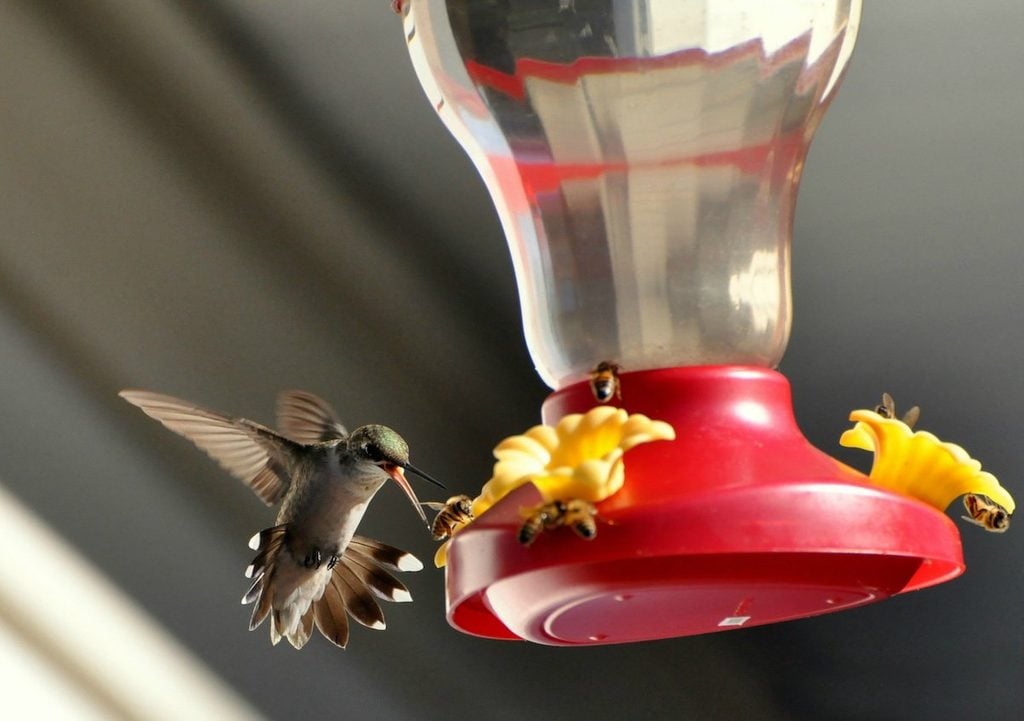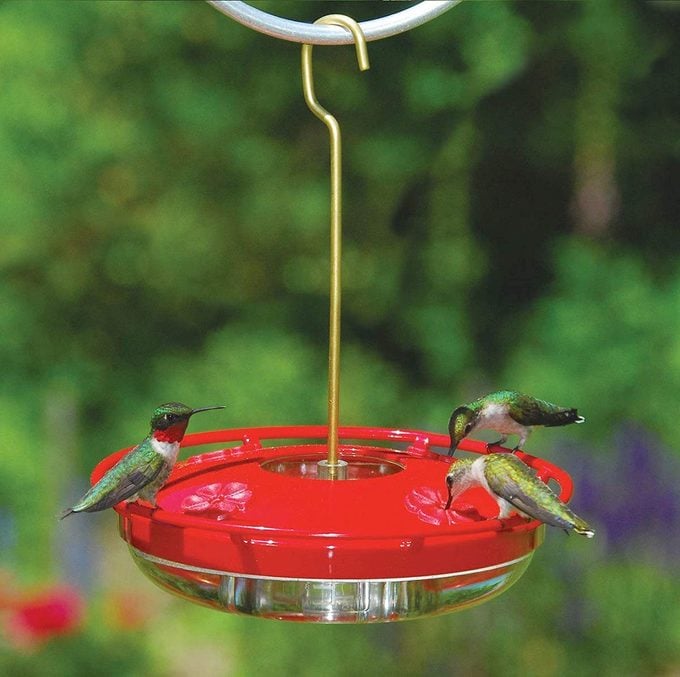7 Natural Ways to Keep Bees and Wasps Away From Hummingbird Feeders
Updated: Nov. 03, 2022

Bugs be gone! Discover seven smart and easy ways to keep bees and wasps away from your hummingbird feeders, without harming these pollinators.
Our editors and experts handpick every product we feature. We may earn a commission from your purchases.
Feeders filled with sugar water attract hummingbirds. But sometimes, not-so-welcome guests, including ants, wasps and bees, crawl into hummingbird feeders and create problems. For frustrated backyard birders, it may be tempting to use pesticides or insecticides to deter bugs. But Emma Greig, the project leader for Project FeederWatch of the Cornell Lab of Ornithology, advises against these options because they may harm birds, as well as the bees whose populations are declining.“You can deter insects while remembering they’re part of nature, too,” says Greig. Instead, try some of these all-natural solutions to keep bees and wasps away from hummingbird feeders. The birds (and bees!) will thank you.
Check out 13 questions about hummingbird feeders answered by experts.
1. Keep Bees and Wasps Away with Red Saucer Feeders
One way to keep bees and wasps away is with saucer hummingbird feeders. With their long tongues, hummingbirds can reach the nectar in saucer feeders—but insects can’t. Plus, while hummingbirds prefer the color red, bees are more attracted to yellow. Here’s the recipe to make your own hummingbird sugar water. Replace the sugar water every few days.
2. Attach an Ant Moat to Hummingbird Feeders
Ant moats are typically about 3 inches wide and 1 to 2 inches deep. Hang them above hummingbird sugar water feeders. Because ants can’t swim, water is an effective deterrent. You can also buy hummingbird feeders with built-in ant moats. Keep the moats clean and filled with water.
Check out more hummingbird feeders birds will love to visit.
3. Hang Hummingbird Feeders with Fishing Line
Fishing line is too thin for ants to climb, which means they won’t be able to reach your hummingbird feeders for a free meal.
Learn how to clean hummingbird feeders.
4. Slip Nectar Guard Tips over Hummingbird Feeder Holes
Nectar guard tips keep bees, wasps and yellow jackets away from hummingbird feeders, but hummingbirds can still get to the nectar. You can also get replacement yellow bee guards for glass bottle feeders.
5. Periodically Move Feeders
Just moving feeders by 3 or 4 feet will help insects lose track of them. Birds will still find them easily, but insects often won’t.
Discover 5 beneficial bees you want in your garden.
6. Place Fake Wasp Nests Nearby
Remove all active wasp nests from the area where you want to place your feeders. Then hang the fake wasp nests in protected areas (away from rain) to deter real wasps, which are territorial and won’t typically venture into a place they think is already occupied.
Learn 6 key differences between bees and wasps.
7. Plant Bee- and Hummingbird-Friendly Flowers
Give the bees an attractive alternative. Pollinators will flock to nectar-rich flowers in containers and the garden. Try colorful annuals like fuchsia and impatiens, and perennials like trumpet vine, bee balm and cardinal flower.
Next, check out 7 sweet facts about honeybees.


